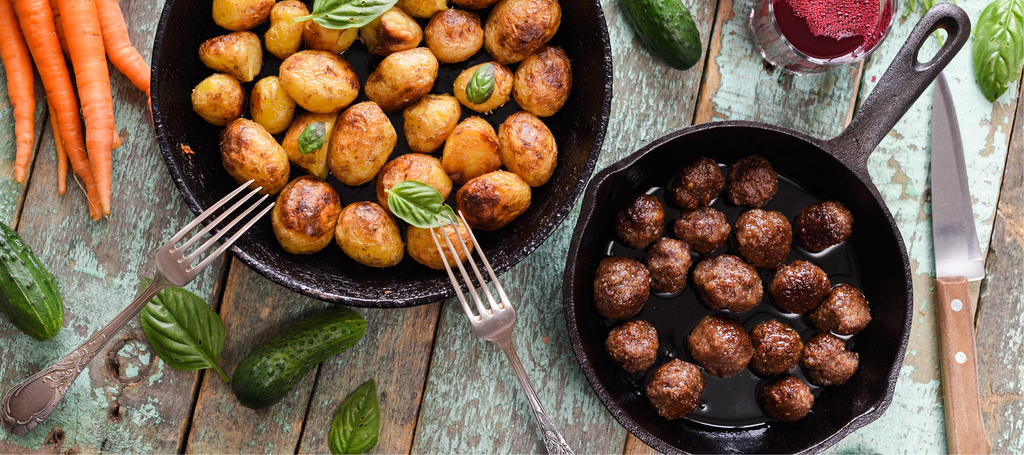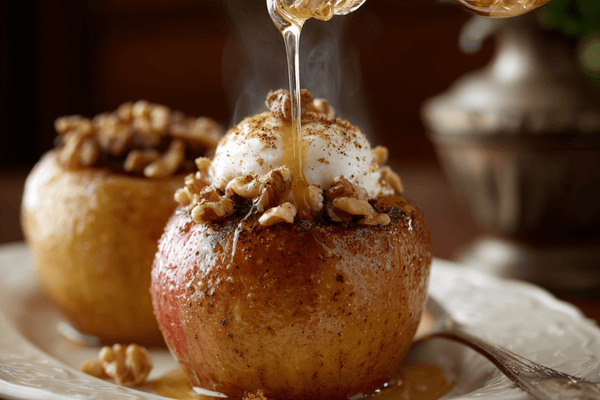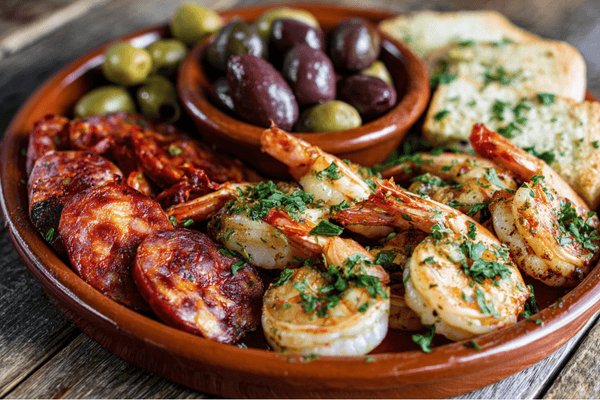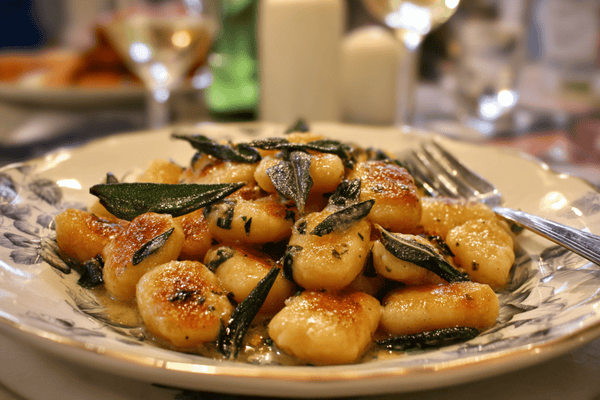
If I were to ask you about Scandinavian or Nordic cuisine, you’d probably start talking to me about rye bread, pickled herring and meatballs, right? OK, you might not be far off the mark as both of these things do fall into this category but there’s so much more to understand about food from this corner of the world.
From the world-famous smorgasbord to lesser-known dishes like leverplat, there’s a whole feast just waiting to be discovered. So let’s get stuck into our guide on all things Scandi food.
Table of contents
What Sets Scandinavian Food Apart From Other Cuisines?

One of the things that makes Scandinavian cooking so satisfying is that it is hearty and comforting with lots of Swedish meatballs and mashed potatoes. No wonder when these countries often have long, cold, dark winters so comfort food is a must! Moreover, the flavours are simple yet incredibly satisfying, it seems they’ve got the balance just right.
You will also notice that Scandinavian food involves a lot of very specific techniques like drying, smoking, pickling and preserving. This is largely to do with those cold winters we mentioned and dates back to Viking times. Back then, people would use these cooking techniques for preserving food to make sure they had enough food to last the winter and it's stuck to this day.
There are lots of different types of food in Scandinavian cuisine including seafood and meats. One of the most interesting things where these types of food are concerned is the sheer variety. From bear, deer, and horse, to kinds of seafood like whale and more traditional meats like roast beef, game and pork, there’s something on the menu for every taste.
You’ll also find a lot of dairy products, breads, fruits and vegetables on the Scandinavian plate including a lot of fermented products.
Getting to Know Some Unusual Scandinavian Dishes
Let’s take a look at some dishes that you may not be familiar with. While the smorgasbord is well-known around the world, and we’ll look at that later on, there is so much more to Scandinavian cuisine than one might first realise.
Palt
Palt is a dish that comes from Sweden and features a potato dumpling filled with meat. Typically it would be pork but it is possible to use other meats. You’ll find other ingredients stuffed into the potato dumpling including onions which are then served with a dollop of butter and some lingonberry jam.
Leverpalt
This dish is a take on palt but in this case, you’ll add some minced liver into the dough. For everything else, it’s exactly the same, including the cooking methods.
Kroppkakor

Another type of potato dumpling that is stuffed with meat is kroppkakor which is cooked in the same way as palt. The only real difference is that when making palt, you would use raw potato whereas kroppkakor is made using boiled, mashed potato.
This makes the dumpling whiter in colour whereas palt dumplings are usually grey. Many people stuff these with pork too but there are some recipes that call for the use of eel.
Paltbrod
If you want an unusual take on bread then Scandinavian cuisine will have exactly what you’re looking for. Paltbrod contains blood which makes this very high in iron. Using other ingredients like wheat, rye flour and yeast, you end up with a loaf that’s either soft or crispy. Scandinavians will eat this with fried bacon and lashings of a cream sauce that’s similar to bechamel.
Kanelbullar

For those with a sweet tooth, this snack is not all that dissimilar to cinnamon buns. The dough is spiced and sweet and it is shaped into a scroll before baking. These sweet treats are very common in Sweden and are usually taken with coffee.
Rosette Cookie
When Christmas comes around, is there anywhere else you’d rather be than deep in the heart of Scandinavia? There’s just something magical about this place, maybe because the North Pole is so close by!At this time of year, Scandinavian chefs serve up rosette cookies which are deep-fried pastries with a lovely crispy bite. They come in a flower shape and are made from sugar, eggs and milk. There’s a bit of a technique to making them in that you need a special iron to get the shape right. Once you’ve got it, the batter is dipped in hot oil to crisp off the outer part.
Rosette cookies are usually decorated with cinnamon and sugar and are an extremely popular choice in Nordic cooking around the holiday season.
What You’ve Been Waiting For - The Smorgasbord

We couldn’t write a guide on Scandinavian cuisine without including the Swedish cuisine of smorgasbord. These are often eaten at lunchtime in all of the Scandinavian countries but they’re not uncommon at other meals like breakfast and dinner.
Simply put, a smorgasbord is a platter of foods, both hot and cold, so that diners can pick and choose at leisure. Sometimes, this might resemble a buffet whereas other times, your food will be brought to the table for you to choose as you sit. How you get your smorgasbord really depends on which country you’re dining in.
For example, the Swedes typically serve a smorgasbord progressively. You’ll have a starter course that’s usually made up from cheeses and breads. Following that, cold fish like herring, salmon and eel are served. You’ll then have a choice of hot meats and salads before being served a dessert.
Hop across the Baltic Sea to Denmark and the smorgasbord is quite different. Here, you will find open sandwiches and a table that’s filled with everything from cheese, salad, smoked fish and meats as well as hot boiled potatoes. It’s much less formal and not split into courses so you’ll choose what you like when you like.


